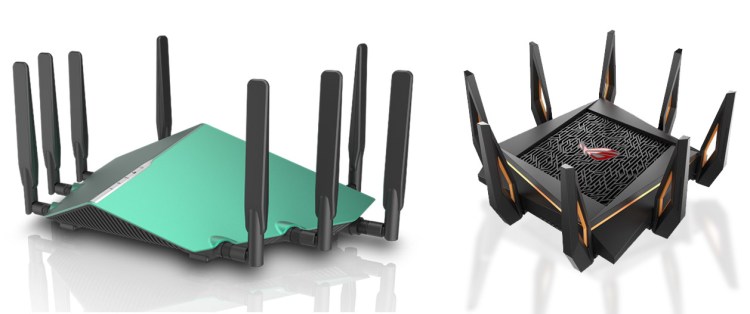The Wi-Fi Alliance today announced a significant rebranding of the “802.11” Wi-Fi standards that have long served as a source of potential confusion for users: Going forward, the current 802.11ac standard will be known as Wi-Fi 5, while its successor 802.11ax will be known as Wi-Fi 6, establishing a generational terminology that — like Bluetooth 3, 4, and 5 — will be easier for customers to remember and understand.
“For nearly two decades, Wi-Fi users have had to sort through technical naming conventions to determine if their devices support the latest Wi-Fi,” said Wi-Fi Alliance CEO Edgar Figueroa. “Wi-Fi Alliance is excited to introduce Wi-Fi 6, and present a new naming scheme to help industry and Wi-Fi users easily understand the Wi-Fi generation supported by their device or connection.”
Today’s announcement is significant not just because of its impact on currently popular Wi-Fi standards, but also on one that’s been on the fringe: 802.11ad. Also known as WiGig, 802.11ad notably depends on an extra, 60GHz millimeter wave wireless antenna to boost speeds of compatible devices in the same room as the router. A handful of routers and devices, including wireless VR adapters, have adopted 802.11ad over the past year or two.
But the announcement makes clear that the Wi-Fi Alliance sees 802.11ax, not 802.11ad, as the next stage of Wi-Fi’s evolution. 802.11ax has no need for the extra antenna, instead making more efficient use of the 2.4GHz and 5GHz bands already used by 802.11ac — err, Wi-Fi 5. Wi-Fi 6 promises up to 11 Gbps speeds across three or more devices, with a single Wi-Fi 6 device achieving up to 5 Gbps.
June 5th: The AI Audit in NYC
Join us next week in NYC to engage with top executive leaders, delving into strategies for auditing AI models to ensure fairness, optimal performance, and ethical compliance across diverse organizations. Secure your attendance for this exclusive invite-only event.
In a statement to VentureBeat, the Alliance explained how Wi-Fi 6 and WiGig will coexist:
“Wi-Fi 6 and WiGig, based on 802.11ad and eventually 802.11ay, will continue to evolve in parallel and remain strong complements to one another within the Wi-Fi portfolio of technologies. We fully expect some products to integrate Wi-Fi 6 and WiGig, which will remain a distinct brand to indicate products that support 60 GHz Wi-Fi for multi-gigabit, low-latency connectivity.”
The Alliance says that Wi-Fi 4 will be used to identify devices with 802.11n technology. Although there were earlier 802.11a, 802.11b, and 802.11g standards, the Alliance told VentureBeat that it will not retroactively use Wi-Fi 1 to 3 to identify generations that have mostly, but not entirely, faded into the background.
Early routers supporting Wi-Fi 6 have been expected this year, and as discussed in a prior article, the first examples from D-Link and Asus look like monstrous spiders. The Wi-Fi Alliance says that its certification program for the new standard will be coming in 2019.

